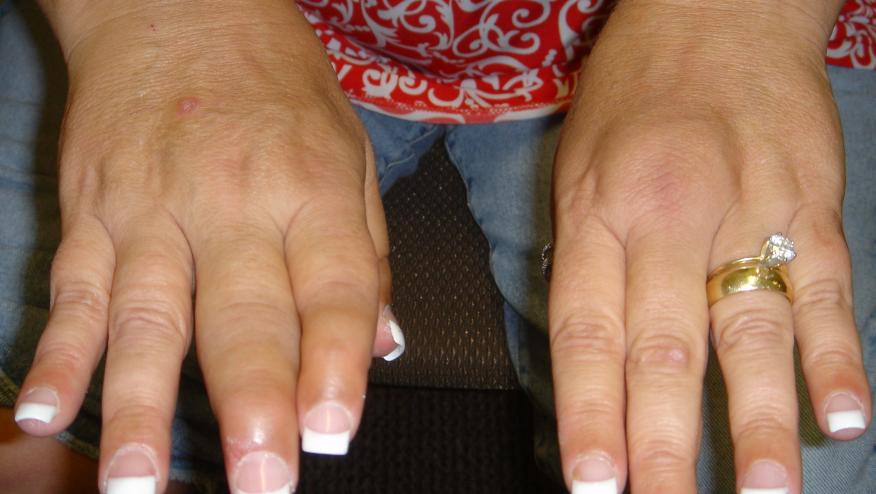Bimekizumab is Coming… in Third Place Save

Of the many exciting advancements for patients with psoriatic arthritis at ACR Convergence, one upcoming therapy stood out: the dual IL-17A/F inhibitor bimekizumab. Nearly two dozen bimekizumab abstracts will be featured at this year’s meeting and it recently received authorization in Europe and the United States for psoriasis. That makes this the year I plan to figure out where this drug will be useful for my patients with psoriatic arthritis (PsA).
Rheumatologists will be familiar with the IL-17 pathway, but many may not be aware that there are actually two isoforms of interleukin 17, known as IL-17A and IL-17F. The interleukin-17 inhibitors secukinumab (cosentyx) and ixekizumab (taltz), both of which have been approved for psoriatic arthritis, selectively inhibit IL-17A, which is thought to be the more potent cytokine. Bimekizumab is a dual IL-17A/F inhibitor, which demonstrated superiority against secukinumab within the confines of psoriasis in a landmark 2021 phase 3 trial. Patients who received bimekizumab had a 13% higher rate of PASI100 response at week 16, or a number needed to treat 8 patients. Unfortunately this came at the cost of a 16% higher rate of candida infections, or a number needed to harm 6 patients. Whether a higher rate of complete clearance is worth the higher rate of mild to moderate oral candidiasis will likely vary from patient to patient.
How will this translate to psoriatic arthritis?
The recently published BE-OPTIMAL trial observed better responses with respect to the ACR50 for patients with psoriatic arthritis who received bimekizumab as compared to placebo (44% vs. 10% at week 16) but similar responses to a TNF inhibitor (44% vs. 46% at week 16). These results tell the same story as similar trials for secukinumab and ixekizumab. Namely, IL17 inhibitors perform better for psoriasis but have similar efficacy for joints. If the transitive property of drug trial comparisons stands up (ie ixekizumab/secukinumab ~ TNF and bimekizumab ~ TNF, ergo ixekizumab/secukinumab ~ bimekizumab), then I would expect the entire class of IL17 inhibitors to be about the same for joints.
In this context, my approach to ACR abstracts has been to decide whether bimekizumab should come before or after its more selective brethren. A late breaking extension of the aforementioned BE-OPTIMAL study (Abstr L02) demonstrated persistent benefit at week 52, but bimekizumab still failed to demonstrate ACR50 superiority over a TNF inhibitor. Manifestation-specific pooled results from bimekizumab trials demonstrated benefit against placebo for uveitis (Abstr 2548) and against secukinumab for nail disease (Abstr 2255). Concerns about IL-17 inhibitors triggering inflammatory bowel disease seemed not to be substantiated, with only 2 patients developing IBD across the large BE-OPTIMAL and BE-COMPLETE studies (Abstr 1433). As to be expected for efficacious psoriatic and psoriasis drugs, bimekizumab fared well against placebo with respect to health related quality of life (Abstr 2250, Abstr 2249) and pain / fatigue scores (Abstr 0527). We learned a little more about the oral candidiasis risk; namely, that it occurs at a rate of 7 patients per 100 person years and only rarely leads to drug discontinuation (Abstr 1441).
What I have not found at ACR Convergence is any evidence that bimekizumab outperforms secukinumab or ixekizumab for joint symptoms. As far as I can tell, there are no plans to run a comparative effectiveness trial. Absent a clear benefit for joints, the side effect profile of bimekizumab relegates it to second (or third) place for psoriatic arthritis. Patients with psoriatic arthritis who suffer from severe skin disease may plausibly favor bimekizumab, but unless such patients had inflammatory low back pain, I would generally forego IL-17’s entirely and recommend an IL-23 inhibitor. Ultimately the news at ACR Convergence has been positive for bimekizumab and I expect regulatory agencies to approve its use in psoriatic arthritis. Absent new data, however, I plan to use it as a second-line IL-17 inhibitor.









If you are a health practitioner, you may Login/Register to comment.
Due to the nature of these comment forums, only health practitioners are allowed to comment at this time.